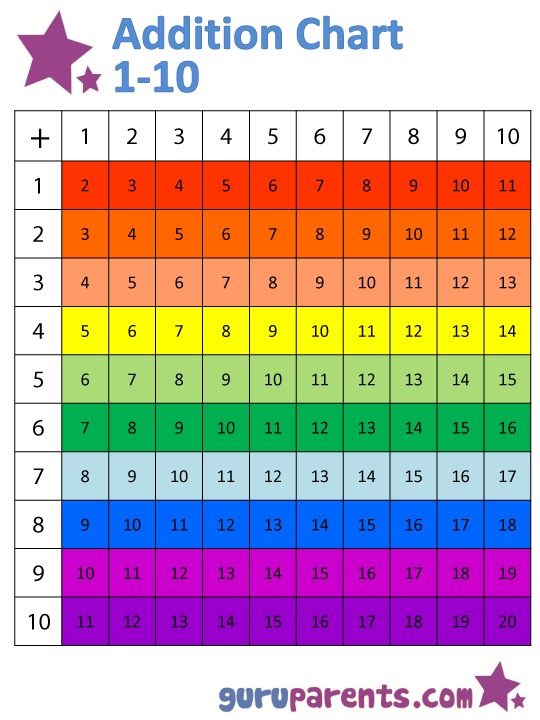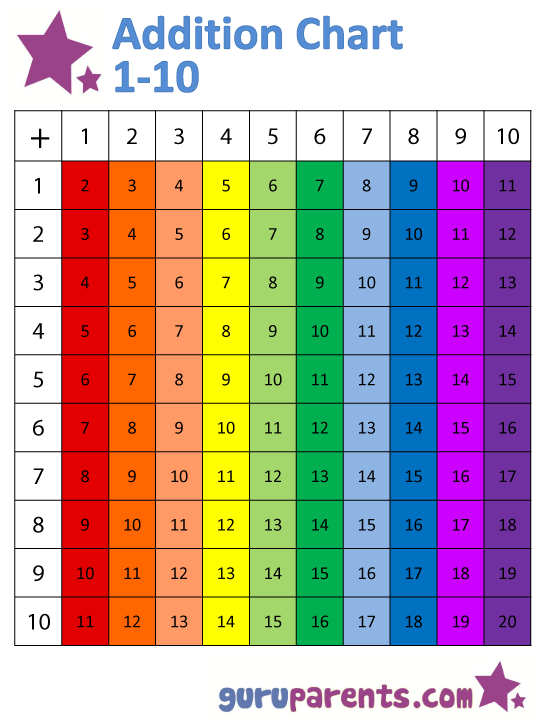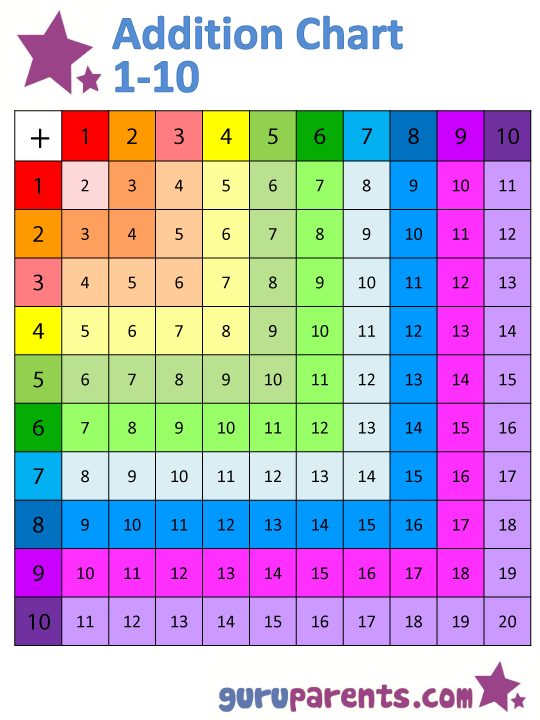We’ve developed a brightly colored addition chart that is easy to use and a practical way to teach your child addition.
The chart lists the numbers 1-10 along the vertical and horizontal axis. The sum of two numbers occurs where two numbers intersect on the chart.
The horizontal coloring has been used as it allows an easy transition to using number lines for additions.
Using the chart
Making the transition from being able to count to being able to add can be difficult for many children. Here are some tips when using the addition chart:
- Counting On – Have your child count on when given a sum. So that two plus three becomes “three, four, five!” as your child counts on from two using their fingers.
- Use everyday objects to learn – Use toys, bits of pasta or even an abacus to help your child learn the concept of addition. Using real objects lets your child understand addition in a practical way.
- Find the answer – call out random addition questions and have your child find the answer on the chart.
- Practice makes perfect – try reciting sums with your child. You can recite “four plus one is five, four plus two is six, four plus three is seven, ..” and so on. Through repetition your child will eventually commit to memory some basic addition.
- Remember – it doesn’t matter in what order the 2 numbers are that you are adding; the result will be the same. For example, 2 + 5 and 5 + 2.
Conclusion
The chart for addition is a great tool for visually representing the way numbers add to form a sum.
Three Versions
We have included three colored versions for your use in pdf format:
The Vertically colored and Horizontally colored versions are great to use when you are focusing on teaching addition with a single number.
The Horizontally and vertically colored version addition chart 1-10 below is a good way to teach your child doubles and how the numbers intersect.



